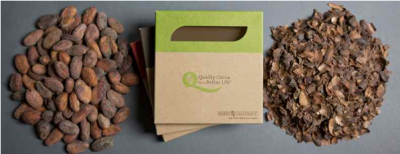Q3 cocoa grind roundup
Combined cocoa ratio grinds down bean processing in Q3

Cocoa grind data from Asia, Europe and North America in Q3 showed a 1% drop on the same quarter last year. South America and Africa have yet to report figures.
The combined cocoa ratio - the price of cocoa butter and cocoa powder at European factories relative to the futures price for cocoa beans – declined from 3.4 a year ago to 2.9 currently.
The ratio impacts profitability for cocoa processors and could be responsible for a drop in Q3 grindings, said the International Cocoa Organization (ICCO).
Cocoa processors’ profit margins weaken
“It was expected that there would be a slowdown in processing this quarter,” Laurent Pipitone, director of the ICCO’s economic division, told ConfectioneryNews.
He said that cocoa processors were struggling to make good returns on cocoa ingredients as the combined cocoa ratio declined due to higher stocks of powder and butter, particularly in Indonesia.
Suppliers sometimes pass on price fluctuations on the futures market costs to manufacturers, but Pipitone said: “In the last few months they have had difficulties passing on the cocoa bean price because demand was not as strong as it was.”
Market | Q3 cocoa grind (MT) | Increase/Decline |
North America | 138,027 | +6% |
Asia | 151,643 | -6% |
Europe | 327,866 | -1% |
Brazil | 56,983 | -9.8% |
Asia slump
The Q3 cocoa grind in Asia fell 6% to 151,643 MT. The drop could have been even greater as the Q3 2014 stats included grinds from two additional factories.
Marcia Mogelonsky, director of insight at Mintel, said that economic growth in Asia had slowed in Q3 from over 10% to 7.3%.
“Trickle down to chocolate confectionery, and while the market is still robust, sales are slowing,” she said, adding that cocoa did not have as many alternative uses in Asia compared to Europe and North America, which may have impacted grind figures.
Mogelonsky added that if Asian consumers cut back on purchasing chocolate as a luxury item, the big three players in China - Mars, Nestlé and Ferrero – could start competing on price to maintain their appeal.
However, she said the Asian economy may rebound to the benefit of chocolate sales.
Consumers swallow chocolate price hikes
European cocoa processing declined 1% to 327,866 MT in Q3, but the North America grind registered a 6% rise to 138,027 MT.
“The +6% shows that there is still a strong demand for chocolate in the US, even with the price hikes imposed earlier this year by Hershey, Mars and Nestlé… to me the message is that consumers have swallowed the price hikes without too much pushback,” said Mogelonsky.
Earlier this year Hershey, Mars Chocolate North America, Nestlé and Mondelēz. However, she said another price hike in response to rising cocoa costs may not be met with as much acceptance.
Production forecasts
The ICCO anticipates a global cocoa supply surplus of 40,000 (MT) for the 2013/14 season due to favorable weather.
“The production has been quite high in West Africa – Côte d’Ivoire reached record production and Ghana is also quite high,” said Pipitone.
The ICCO expects a deficit slightly under 100,000 MT for the next crop year, 2014/15, as production struggles to keep up with rising demand for cocoa in emerging economies in Asia and Latin America.




